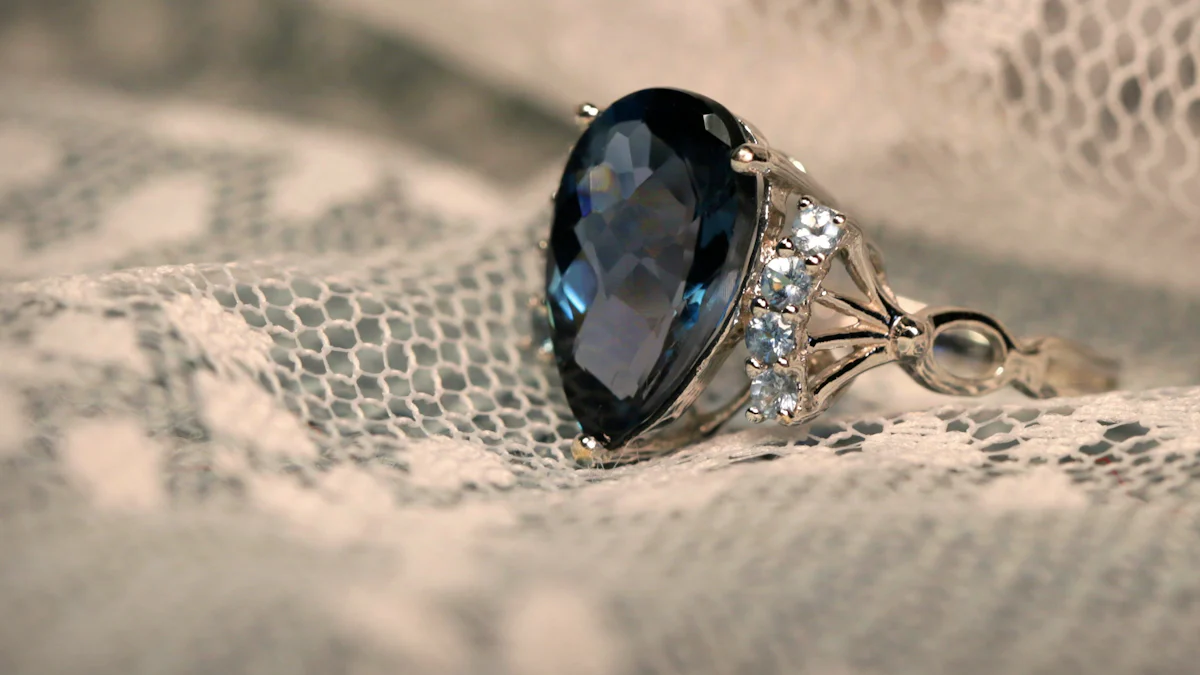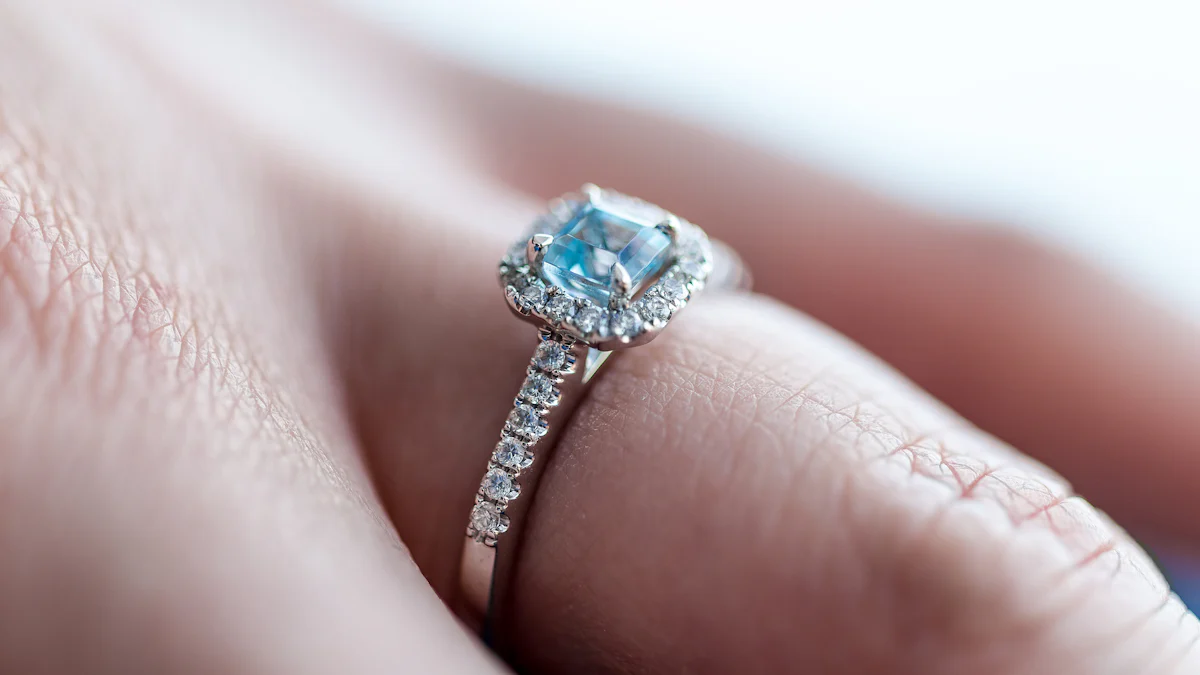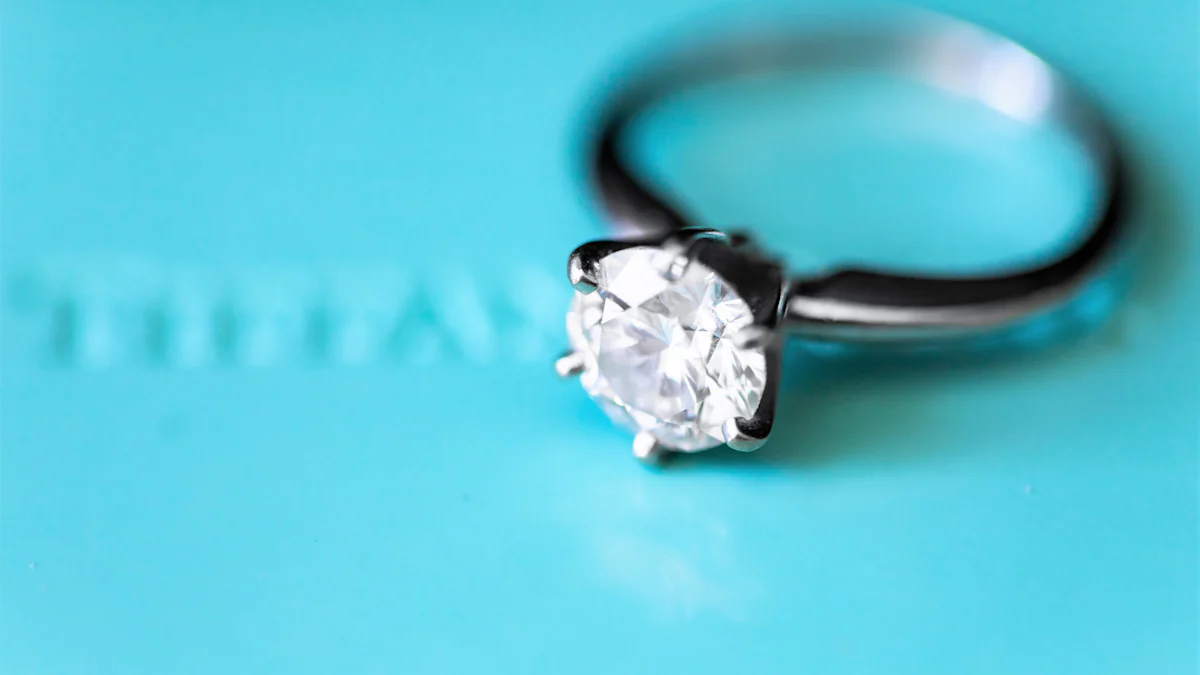I diamond color vs others: Which is better?

When selecting a diamond, finding the perfect balance between beauty and affordability is key. I diamond colour emerges as an excellent choice for those mindful of their budget. Classified as near-colorless, I diamond colour exhibits a faint tint that is barely noticeable to the naked eye. These diamonds offer exceptional value, often priced 30-40% lower than higher-grade options like D or E. Despite their cost-effectiveness, I diamond colour retains a stunning brilliance, particularly when set in jewelry. This makes them a favored option for individuals seeking sophistication without exceeding their budget.
Key Takeaways
- I diamond color offers a near-colorless appearance at a significantly lower price, making it an excellent choice for budget-conscious buyers.
- Understanding the GIA color scale helps you make informed decisions; I diamonds fall between H and J, showcasing a faint tint that is often imperceptible.
- I diamonds maintain impressive brilliance, especially when cut well, ensuring they sparkle just as beautifully as higher-grade diamonds.
- Pair I diamond color with yellow or rose gold to mask its slight tint, or choose white gold and platinum for a modern look that highlights its near-colorless quality.
- For larger diamonds over 1 carat, consider consulting a gemologist to find an I diamond that appears whiter and minimizes visible tint.
- While I diamonds provide great upfront value, be aware that their resale value may not match that of higher-grade diamonds, which could impact long-term investment.
- Evaluate your personal style and preferences when selecting an I diamond, as its versatility allows it to fit various aesthetics and settings.
Understanding the GIA Color Scale

The Gemological Institute of America (GIA) developed a diamond color grading system that has become the industry standard. This scale, ranging from D to Z, evaluates a diamond's color based on its tone and saturation. The system ensures consistency and accuracy when assessing diamonds, making it easier for you to understand their quality.
Overview of the Diamond Color Grading System
The GIA color scale categorizes diamonds into distinct groups. Diamonds graded D, E, and F are considered colorless, offering the highest level of purity. These diamonds exhibit no noticeable tint, even under magnification. Grades G through J fall into the near-colorless category. These diamonds may show slight hints of yellow or brown, but the color is often hard to detect without comparison to higher grades. Beyond J, diamonds display increasingly noticeable color, with Z representing stones with the most visible tint.
The grading process involves comparing diamonds to masterstones under controlled lighting. This method ensures that each diamond receives an accurate and fair evaluation. By understanding this system, you can make informed decisions when selecting a diamond.
Where I Diamond Color Falls on the Scale
I diamond color belongs to the near-colorless category, sitting between H and J on the GIA scale. These diamonds show a faint tint, but the color remains subtle. When viewed without direct comparison to higher grades, the tint is often imperceptible. This makes I diamond color an appealing choice for those seeking a balance between quality and affordability.
The position of I diamond color on the scale highlights its value. It offers a near-colorless appearance at a fraction of the cost of higher-grade diamonds. This grade works well in various settings, especially when paired with metals like yellow or rose gold, which can mask the slight tint. For many buyers, I diamond color provides an excellent compromise between beauty and budget.
Pros and Cons of I Diamond Color
Advantages of I Diamond Color
I diamond color offers several benefits that make it a popular choice for buyers. First, it provides an excellent balance between quality and cost. You can enjoy the near-colorless appearance of these diamonds without paying the premium prices associated with higher grades like D or E. This makes I diamond color an ideal option for those who want beauty without overspending.
Another advantage lies in its versatility. I diamond color pairs well with various metal settings, including yellow gold, rose gold, and even white gold. The slight tint in the diamond often blends seamlessly with these metals, enhancing its overall appearance. For example, yellow or rose gold settings can mask the faint color, making the diamond appear even more brilliant.
Additionally, I diamond color maintains a level of brilliance and sparkle comparable to higher-grade diamonds. When set in jewelry, the slight tint becomes nearly invisible to the naked eye, especially in smaller stones. This means you can achieve a sophisticated and elegant look without compromising on visual appeal.
Disadvantages of I Diamond Color
Despite its advantages, I diamond color has some drawbacks you should consider. The faint tint, while subtle, becomes noticeable when compared directly to higher-grade diamonds like D, E, or F. If you prioritize a completely colorless appearance, this may not be the best choice for you.
For larger diamonds, the color tint in I diamond color becomes more apparent. Diamonds over 1 carat tend to show their color more visibly, which could affect their overall brilliance. In such cases, you might need to opt for a higher grade to achieve a more colorless look.
Lastly, the resale value of I diamond color may not match that of higher-grade diamonds. Buyers often perceive diamonds with less color as more valuable, which could impact your investment if you plan to sell the diamond in the future. While I diamond color offers affordability upfront, it may not hold its value as strongly over time.
Comparing I Diamond Color to Other Grades

I Diamond Color vs Higher Grades (D-H)
When comparing I diamond color to higher grades like D, E, F, G, and H, the most noticeable difference lies in the level of colorlessness.
This makes them an excellent choice for buyers who want brilliance and beauty without exceeding their budget.
In terms of brilliance, I diamonds hold their own. A diamond's optical properties, such as sparkle and fire, depend more on its cut quality than its color grade. This means an I diamond with an excellent cut can appear just as dazzling as a higher-grade diamond. For many buyers, this balance between appearance and affordability makes I diamond color a practical and appealing option.
I Diamond Color vs Lower Grades (J-Z)
When compared to lower grades like J through Z, I diamond color stands out as a superior choice for those seeking a near-colorless appearance. Diamonds in the J to Z range exhibit increasingly noticeable tints of yellow or brown. These tints become more apparent as you move down the scale, with Z-grade diamonds showing the most color saturation. If you prefer a diamond with minimal visible color, I diamond color offers a clear advantage over these lower grades.
Another key difference lies in versatility. I diamonds pair well with a variety of metal settings, including white gold and platinum, which highlight their near-colorless quality. In contrast, lower-grade diamonds often require yellow or rose gold settings to mask their stronger tints. This limits your options when designing or selecting jewelry.
From a value perspective, I diamond color strikes a better balance. While lower-grade diamonds may come at a lower price point, their visible color can detract from their overall appeal. I diamonds, on the other hand, deliver excellent brilliance and a subtle tint that remains hard to detect in most settings. This makes them a more attractive option for buyers who want quality without compromising on aesthetics.
Suitability of I Diamond Color for Different Settings
Best Metal Choices for I Diamond Color
Choosing the right metal setting can enhance the beauty of an I diamond color. The faint tint in these diamonds often blends seamlessly with various metals, allowing you to create a stunning piece of jewelry. Each metal type offers unique advantages when paired with I diamond color.
-
Yellow Gold: Yellow gold complements the slight warmth of I diamond color. The natural hue of the metal masks the faint tint, making the diamond appear more vibrant. This pairing creates a classic and timeless look.
-
Rose Gold: Rose gold works similarly to yellow gold. Its warm tones harmonize with the subtle color of I diamonds, enhancing their brilliance. This combination is ideal for those who prefer a romantic and vintage-inspired aesthetic.
-
White Gold and Platinum: White metals like white gold and platinum provide a modern and sleek appearance. They contrast with the faint tint of I diamonds, emphasizing their near-colorless quality. For smaller stones, this pairing can make the diamond appear even whiter.
Expert Insight: "I color diamonds look gorgeous when set in both warm and white metals. They present an economic advantage over higher color grades and still have the appearance of being almost colorless." – Gemologist
When selecting a metal, consider your personal style and how the metal interacts with the diamond's color. The right choice can elevate the overall appeal of your jewelry.
Matching I Diamond Color to Personal Preferences
Your personal preferences play a significant role in determining whether I diamond color suits your needs. These diamonds offer versatility, allowing you to tailor their appearance to your taste.
-
For a Classic Look: Pair I diamond color with yellow or rose gold. These metals enhance the diamond's warmth, creating a traditional and elegant style.
-
For a Modern Aesthetic: Opt for white gold or platinum. These metals highlight the near-colorless quality of I diamonds, giving them a contemporary and sophisticated edge.
-
For Smaller Stones: I diamond color works exceptionally well for diamonds under 1 carat. The faint tint becomes nearly invisible, ensuring the diamond maintains its brilliance and sparkle.
-
For Larger Stones: If you prefer larger diamonds, consult a gemologist to find an I diamond that "faces up white." This ensures the diamond appears brighter and minimizes the visibility of its tint.
Expert Advice: "An I color diamond delivers excellent brilliance even as some shading of color can be identified by a gemologist. The color is still not recognizable to an untrained eye and provides excellent value." – Gemologist
By aligning the diamond's characteristics with your preferences, you can achieve a piece of jewelry that reflects your style and meets your expectations.
I diamond color offers an exceptional balance between affordability and near-colorless beauty. Its subtle tint remains almost invisible to the naked eye, making it a practical choice for those seeking elegance without overspending. By choosing I diamond color, you can allocate more of your budget to other important factors like cut or carat weight, ensuring a visually stunning diamond. Whether you prefer a classic or modern setting, this grade adapts well to various styles. Evaluate your budget, preferred setting, and personal taste to decide if I diamond color aligns with your needs.
FAQ
What does the GIA color scale represent?
The GIA color scale evaluates a diamond's color based on its tone and saturation. It ranges from D (completely colorless) to Z (noticeable tint). This scale ensures consistency in grading and helps you understand the quality of a diamond's color.
Where does I diamond color fall on the GIA scale?
I diamond color belongs to the near-colorless category. It sits between H and J on the scale. These diamonds show a faint tint, but it is often hard to detect without comparing them to higher-grade diamonds.
Why does diamond color matter?
Diamond color significantly impacts both appearance and price. A colorless diamond, like those graded D or E, appears icy-white and commands a higher price. Diamonds with noticeable tints, such as those graded J or lower, are more affordable but may lack the same visual appeal.
Is I diamond color a good choice for larger stones?
For diamonds over 1 carat, the faint tint in I color diamonds becomes more noticeable. If you prefer a completely colorless look for larger stones, you might consider a higher grade like H or G. However, an excellent cut can still enhance the brilliance of an I diamond.
Which metal settings work best with I diamond color?
I diamond color pairs beautifully with various metals. Yellow and rose gold complement its slight warmth, masking the faint tint. White gold and platinum create a modern contrast, emphasizing the diamond's near-colorless quality.
How does I diamond color compare to D or E grades?
D and E diamonds are completely colorless, offering the purest appearance. I diamonds, while near-colorless, have a faint tint that becomes noticeable when compared directly. However, I diamonds provide a similar brilliance at a much lower cost.
Can I diamond color maintain its brilliance?
Yes, I diamond color retains excellent brilliance, especially when paired with a high-quality cut. The sparkle and fire of a diamond depend more on its cut than its color grade, ensuring that I diamonds still dazzle in most settings.
Are I diamonds suitable for budget-conscious buyers?
Absolutely. I diamonds offer a balance between affordability and beauty. They provide a near-colorless appearance at a fraction of the cost of higher-grade diamonds, making them an excellent choice for those on a budget.
Do I diamonds hold their value over time?
While I diamonds offer great value upfront, their resale value may not match that of higher-grade diamonds. Buyers often perceive colorless diamonds as more valuable, which could impact the investment potential of I diamonds.
How can I choose the right diamond color for my needs?
Consider your budget, personal preferences, and the setting you want. If you prioritize affordability and a near-colorless look, I diamond color is an excellent choice. For a completely colorless appearance, explore higher grades like D or E. Always consult a gemologist for expert advice tailored to your needs.
See Also
Comparative Review of Leading White Diamond Ring Brands
Price Comparison of Various Diamond Necklace Styles
Comparing Prices of All Around Diamond Rings
A Guide to Diamond Cuts for Engagement Rings
In-Depth Comparison of Tungsten and Traditional Diamond Rings

